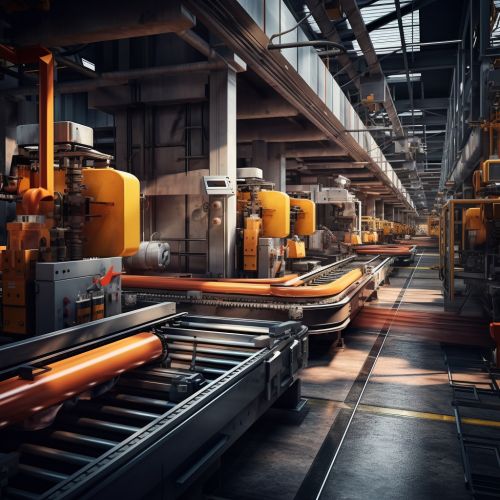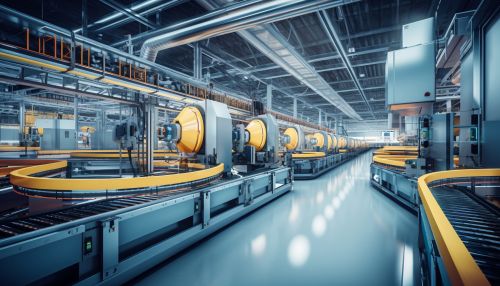Automatic control
Introduction
Automatic control is a broad field of engineering that involves the use of various control systems for operating equipment such as machinery, processes in factories, boilers and heat treating ovens, steering, and stabilization of ships, aircraft, and other applications and vehicles with minimal or reduced human intervention. Some processes have been completely automated. The biggest benefit of automation is that it saves labor; however, it is also used to save energy and materials and to improve quality, accuracy, and precision.


History
The development of automatic control can be traced back to mechanisms like the water clock of Ktesibios of Alexandria and the Antikythera mechanism. Early examples of control systems were developed actually in the field of mechanical engineering. Speed control mechanisms were developed for mechanical systems, a notable example is the centrifugal governor used to regulate the speed of steam engines. The development of electronic amplifiers, such as the operational amplifier, and electronic devices made it possible to replace analog computers with digital computers and then implement digital control.
Control Theory
Control theory is an interdisciplinary branch of engineering and mathematics that deals with the behavior of dynamical systems with inputs. The external input of a system is called the reference. When one or more output variables of a system need to follow a certain reference over time, a controller manipulates the inputs to a system to obtain the desired effect on the output of the system.
Open-loop and Closed-loop Control
There are two common classes of control action: open loop and closed loop. In an open-loop control system, the control action from the controller is independent of the "process output", which is the process variable that is being controlled. In a closed-loop control system, the control action from the controller is dependent on the process output. In the case of linear feedback systems, a control loop including sensors, control algorithms, and actuators is arranged in an attempt to regulate a variable at a setpoint (SP). An everyday example is the cruise control on a road vehicle; where external influences such as hills would cause speed changes, and the driver has the ability to alter the desired set speed.
Stability
Stability is a fundamental concept in the study of automatic control systems. It refers to the ability of a system to return to its equilibrium state after a disturbance. The stability of a system can be determined by analyzing its transfer function in the frequency domain. The Nyquist criterion and the Bode plot are graphical methods used to ascertain the stability of a system.
Control Systems
Control systems are systems of devices or set of devices, that manages, commands, directs or regulates the behavior of other devices or systems to achieve desired results. In other words, a control system manages and maintains a system or device in a state of balance or equilibrium.
Linear Control Systems
Linear control systems use linear negative feedback to produce a control signal mathematically based on other variables, with a view to maintain the controlled process within an acceptable operating range. The output of the system is controlled by varying the input(s). The control signal is a function of the output and reference input. A typical example of a linear control system is a home heating system.
Nonlinear Control Systems
Nonlinear control systems are those systems for which the superposition principle does not hold. These systems are characterized by the fact that their behavior cannot be expressed as the sum of the behaviors of their parts (or of their functional blocks). Nonlinear systems are often harder to control due to the complexity of the mathematical models used to describe them, but they can often achieve results not possible with linear systems.
Applications
Automatic control systems are widely used in various fields, from simple home appliances to complex industrial processes. They are used in manufacturing, telecommunications, transportation, power systems, and many other areas. Some of the most common applications include automatic door openers, washing machines, automated teller machines (ATMs), traffic signals, and autopilot systems for aircraft.
Future Trends
The future of automatic control lies in the convergence of several key technologies, including machine learning, artificial intelligence, and the Internet of Things. These technologies promise to bring about a new era of automation, where systems can learn and adapt to changing conditions, make decisions based on vast amounts of data, and interact with other systems in a complex network of connected devices.
